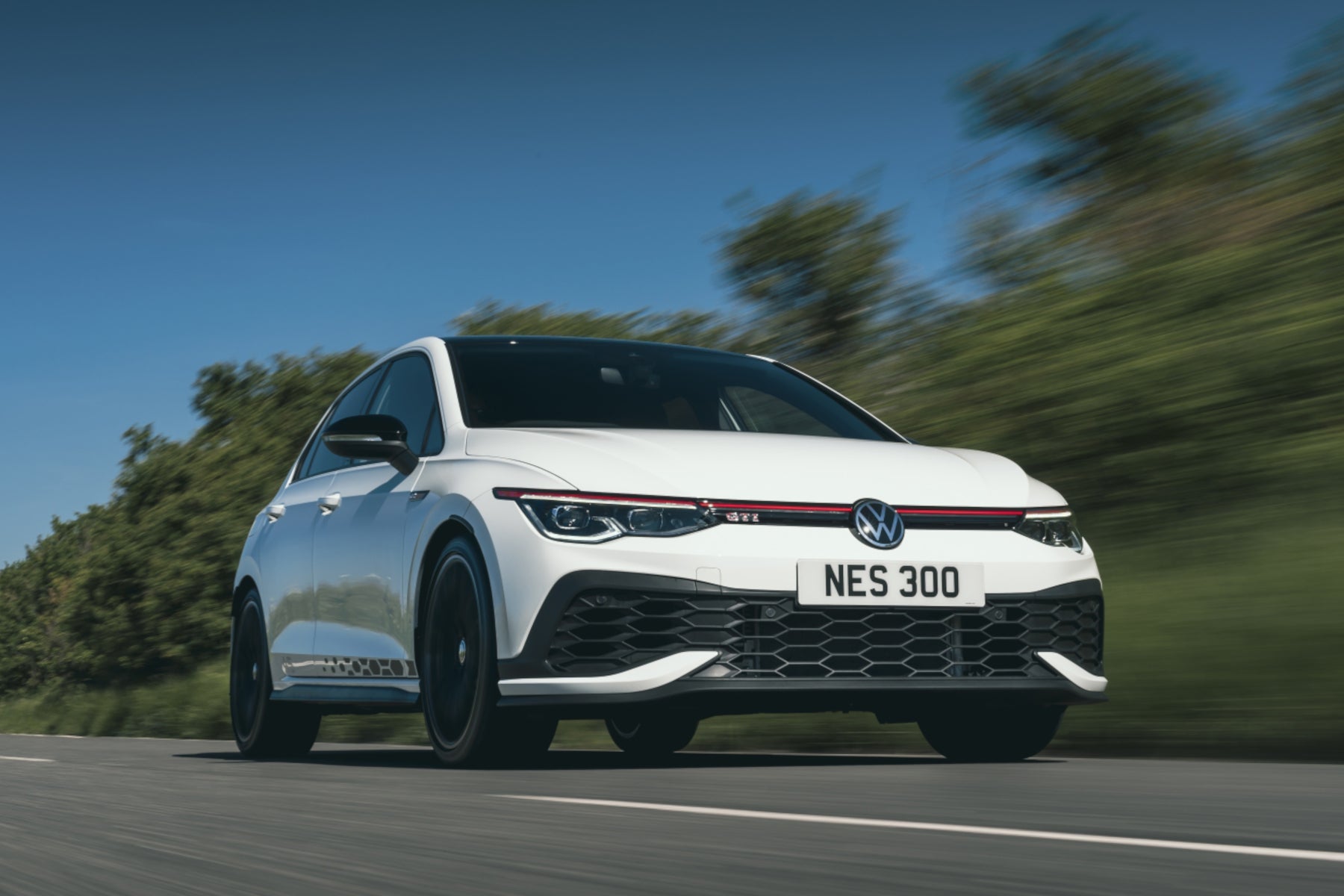Volkswagen Golf GTI Review 2023
Written by Lawrence Allan
Quick overview
Pros
- Good balance of driver appeal and everyday comfort
- Clubsport model is very fast
- Practical and surprisingly efficient
Cons
- Cabin technology is frustrating to use
- It won't thrill you like a Civic Type R
- No manual gearbox on the Clubsport
Overall verdict on the Volkswagen Golf GTI
"The Volkswagen Golf GTI remains the consummate all-rounder of the hot hatch class in its eighth generation. Comfortable and refined when you want it to be, fast and agile when you don't, it's also practical, easy to drive and fairly economical. There are more fun ways to go quickly, though, while it suffers from the same tech grumbles as the regular Golf. "
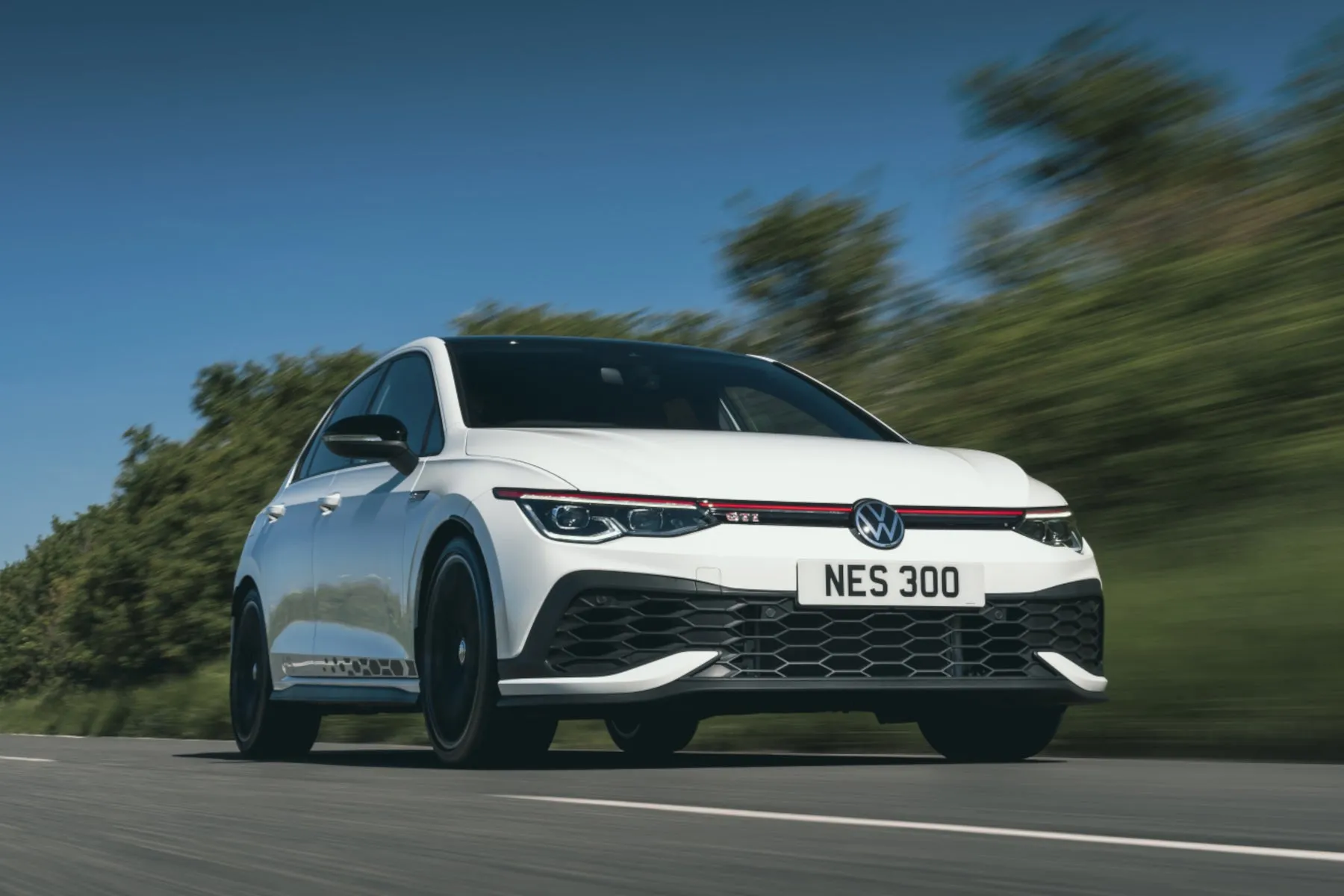
The VW Golf GTI celebrated its 45th anniversary recently. It's by far the longest-living hot hatchback, with the model in this review the eighth generation of a celebrated lineage. Other car companies would kill for that sort of pedigree.
Today Volkswagen will sell you all manner of different fast hatchbacks, with the Golf GTD diesel, the GTE hybrid and the brand's growing range of electric cars soon to benefit from 'GTX' performance branding. But the GTI still stands proud as a popular, well-liked offering - even if the latest model is far from perfect, as we'll detail later on.
The Mk8 Golf GTI we're reviewing here is now a five-door hatchback only: VW has stopped selling a three-door model like many manufacturers, while unlike the four-wheel drive Golf R there is no practical estate variant on offer. However, there's different flavours of Golf GTI: the 'standard' model, and the more powerful, more focused GTI Clubsport.
Go for the regular VW Golf GTI and you get a slightly more pumped up look, with unique bumper designs front and rear compared with the base Golf, twin exhaust outlets, a red strip across the front-end and sportier wheel designs. But it's not a hot hatch that shouts about its performance, with a subtler, more grown up approach than, say, the loutish Honda Civic Type R. That said, the decals and big rear spoiler of the Clubsport are a little more overt.
The same applies inside, where you get splashes of red detailing, figure hugging sports seats and other little sporty touches to remind you that you forked out for the hot Golf. But, fundamentally, it's just as useable and practical as the standard model, meaning it'll easily serve as the main family car or a sensible commuter that you can still enjoy on the weekend. That's the beauty of the GTI - it'll do it all.
There's one big blot on its notebook when it comes to that everyday usability, and it's the irritating, under-developed infotainment and cabin technology that blights the standard Golf. Like a neighbour who likes a loud party you'll learn to live with it, but you shouldn't have to.
Plump for the 'normal' Golf GTI and you'll get 245PS from a 2.0-litre turbocharged petrol engine, which can be mated to a six-speed manual transmission or a seven-speed dual-clutch automatic. If that sounds a bit meek to you, the GTI Clubsport ups the output of that engine to a much more rounded 300PS. It's only available with the automatic gearbox, though, which will upset purists.
Like the standard VW Golf the GTI is front-wheel drive only, but it has a sharper suspension and steering tune, wider and grippier tyres and an electronic limited-slip front differential to help put all that power down on the road. The Clubsport takes things a step further with beefier brakes, lowered and further enhanced suspension and special drive modes.
Key rivals for the Volkswagen Golf GTI include the Ford Focus ST, Honda Civic Type R and Hyundai i30 N. It used to be that the Golf was the default choice in the sector as an all-round hot hatch, but is that still the case?
Looking for a used car for sale? We've got 100s of Volkswagen Approved Used Cars for Sale for you to choose from, including a wide range of VW Golf GTI models for sale. If you're looking for the older version, you need our Volkswagen Golf GTI (2014-2020) review.
Is the Volkswagen Golf GTI right for you?
If you want the fastest and most hardcore hot hatchback that shouts the loudest about its pace, and will give you a huge adrenaline rush on a circuit, then the Volkswagen Golf GTI probably won't be your bag. But then it's never really been about that.
The Golf GTI will be right for you if you want it to make the twisty way home more enjoyable, but you also want a car that'll excel at the boring commutes, take your family on holiday in comfort and refinement and even deliver decent miles-per-gallon. It's the king of the real-world, not the race track.
What’s the best Volkswagen Golf GTI model/engine to choose?
We reckon the flagship VW Golf GTI Clubsport is well worth the extra money. It's very nearly as good as the standard GTI at the daily grind, but that slightly sharper feel and healthy performance boost means it'll put a bigger smile on your face, even without the manual gearbox option.
If you're on a budget, comfort matters above all else or you simply must have a manual car, then the regular GTI is still a good buy. But it isn't very exciting when all's said and done, feeling much like a Golf R-Line with more power.
What other cars are similar to the Volkswagen Golf GTI?
There's a pretty wide variety of alternatives to the VW Golf GTI on sale, with both mainstream and premium badges on the bonnet.
The GTI's closest competitors are the Renault Megane R.S, the Honda Civic Type R, the Ford Focus ST and the Hyundai i30 N - all of which offer variations of the same theme. Then there's the Golf GTI's platform-sharing bedfellows, the Cupra Leon and the Skoda Octavia vRS.
But the Volkswagen badge has, in recent years, signified a slightly more upmarket image, meaning there is also close rivalry in the form of the BMW 128ti, a similarly sporty front-wheel drive hot hatch. The Mercedes-AMG A35 and Audi S3 are also similar, but compete more closely with the Golf R thanks to their extra power and four-wheel drive.
Comfort and design: Volkswagen Golf GTI interior
"Solid, roomy and well-equipped with hints of sportiness, the Golf GTI's interior is a nice place to spend time. Until you try to change the temperature or turn off the traction control, when you'll start grumbling."
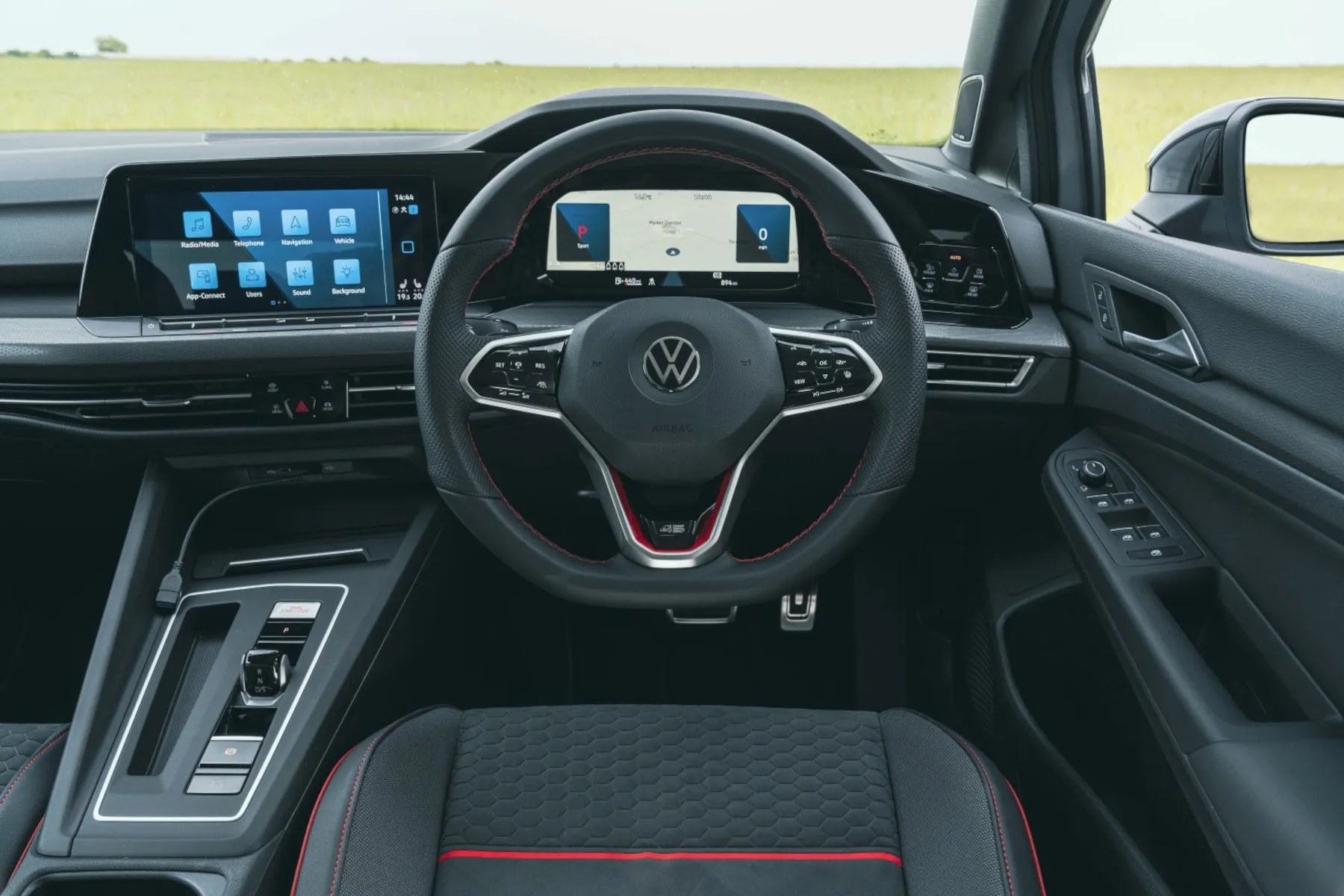
There are no great surprises when you climb aboard the VW Golf GTI: it's like a Golf, only with a touch more attitude.
We like the driving position, which has loads of adjustment, and the standard sports seats with integrated headrests hold you in all the right places without being hard, or uncomfortable for those of different shapes and sizes. You can have those in a bold tartan pattern, too, a now-trademark GTI trait.
The perforated leather sports wheel and aluminium pedals also help make it feel a bit more special than a regular Golf, but those details aside you might find yourself having to point out to a non-enthusiast passenger that this isn't 'just' a Golf.
It's a shame (but hardly surprising) that the Mk8 Golf's infotainment system and haptic touch controls for basically everything have been carried over unchanged, because it just isn't a very good interface. Tasks that should be simple to do on the move, like changing the fan speed or volume, just aren't as easy as they should be, particularly in a Golf.
Still, the build quality is generally good, and there's plenty of storage. Meanwhile it's plenty roomy enough for a couple of growing kids or adult passengers in the back, and the boot is a decent enough size.
Quality and finish
Judged by the general standards of the mainstream hot hatch class the Golf GTI's interior is pretty classy and solid, with a decent mix of materials and a general feeling that it won't fall apart after a few years of hard use.
It's that bit nicer than the GTI's cheaper siblings from SEAT and Skoda, with neat touches such as ambient lighting adding to the sense of polish. But when you start to poke and prod around a bit more, you realise that it really isn't that much of a step up from those cars, with some hard, scratchy plastics dotted about the place and (on our text example) the odd trim rattle. We're not a huge fan of the fingerprint-magnet gloss black trim, either.
None of this would be a big issue if this wasn't a VW Golf. In the previous generation car it really did feel like a premium product, significantly better than mainstream rivals and showing up some posher ones, too. The new car just doesn't set the standard in that respect any more. It's fine, but not outstanding.
Infotainment: Touchscreen, USB, nav and stereo in the Volkswagen Golf GTI
Ah yes, the infotainment. In the old Golf GTI it was hardly a highlight, but it did what it was supposed to do and was flanked by lots of physical buttons, logically placed, to make rudimentary tasks a doddle.
Not so any more. Just like the regular Golf, you get a 10-inch navigation and media system mounted in the driver's line of sight, and paired with a digital driver's display. The GTI gets a few uniquely racy graphics in certain menus, but other than that it's the same.
That means a reasonably responsive screen and decent graphics, plus a good level of customisation for the digital dials. But the compliments stop there. For starters, there are no physical shortcut buttons for anything bar four fiddly touch buttons in the middle of the dash to take you to certain menus. The touch buttons are a frustrating theme, because you never really know if you've actually pushed it and sometimes it requires a second stab.
What's more, the touch 'sliders' below the screen for the temperature, fan speed and volume aren't even backlit at night and are frustrating to use (what on earth was wrong with a simple volume knob!?), while the same applies with the annoying touch sensitive steering wheel buttons that you find yourself accidentally glancing while you're driving.
There's more. The touchscreen menus are over-complicated, with a ridiculous fifteen different settings for the adaptive dampers, and things like the stability control (which you need to turn off to activate launch control) buried within several sub-menus. Yes, you can create a 'hot key' for it if you use it regularly, but why isn't it easily accessed in the first place?
It's not as if the voice control is flawless. Yes, it'll work quite well sometimes, but other times it won't, and you can forget using it if you have loud passengers or fighting kids.
Space and practicality: Volkswagen Golf GTI boot space
Whether you're small, tall, chunky or slim, you'd be hard pushed to find complaint with the space on offer in the front of the VW Golf GTI. The driver's seat goes nice and low, while the area around the well-placed pedals is nice and roomy.
Those seats aren't electric as standard, but you do get an easy lumbar support adjuster on the side. Comfortable yet supportive, our only gripe is that the integrated headrests means the view from the back seats out the windscreen is hindered. What's more, there's decent cabin storage for oddments including bin under the adjustable armrest - you can lock that armrest in place for the perfect elbow rest, too.
Moving to the back, even six footers will find a decent amount of leg- and headroom. It's worth noting that both the Cupra Leon and Skoda Octavia vRS have slightly longer wheelbases (the distance between the front and rear wheels) which give more generous legroom still. The Civic Type R also has more room, but the GTI is hardly cramped.
The rear doors also open nice and wide for easy access, the windows are pretty large to reduce any feeling of claustrophobia, and the ISOFIX mounting points for child seats are easy to access. The middle seat isn't all that usable unless you're in a bind, however.
The Golf GTI's boot is ever so slightly smaller than the standard Golf's at 374-litre (seven litres less), but not enough to make any real difference. As it is it's a decent shape with a wide opening and height adjustable boot floor, but the actual capacity is merely average - a Focus ST and Civic Type R's boot will carry a good deal more. Of course the Skoda Octavia vRS huge load space trumps all of those, though.
In terms of exterior dimensions, the VW Golf GTI is actually pretty compact for the class. It's 4,258mm long, 1,789mm wide and 1,458mm tall, making it shorter than the majority of its rivals.
Handling and ride quality: What is the Volkswagen Golf GTI like to drive?
"Spec your Golf GTI with Dynamic Chassis Control and it'll smooth out the worst bumps like a regular Golf, while letting you firm things up nicely when the going gets twisty. Performance is strong, too, but even the Clubsport isn't thrill-a-minute."
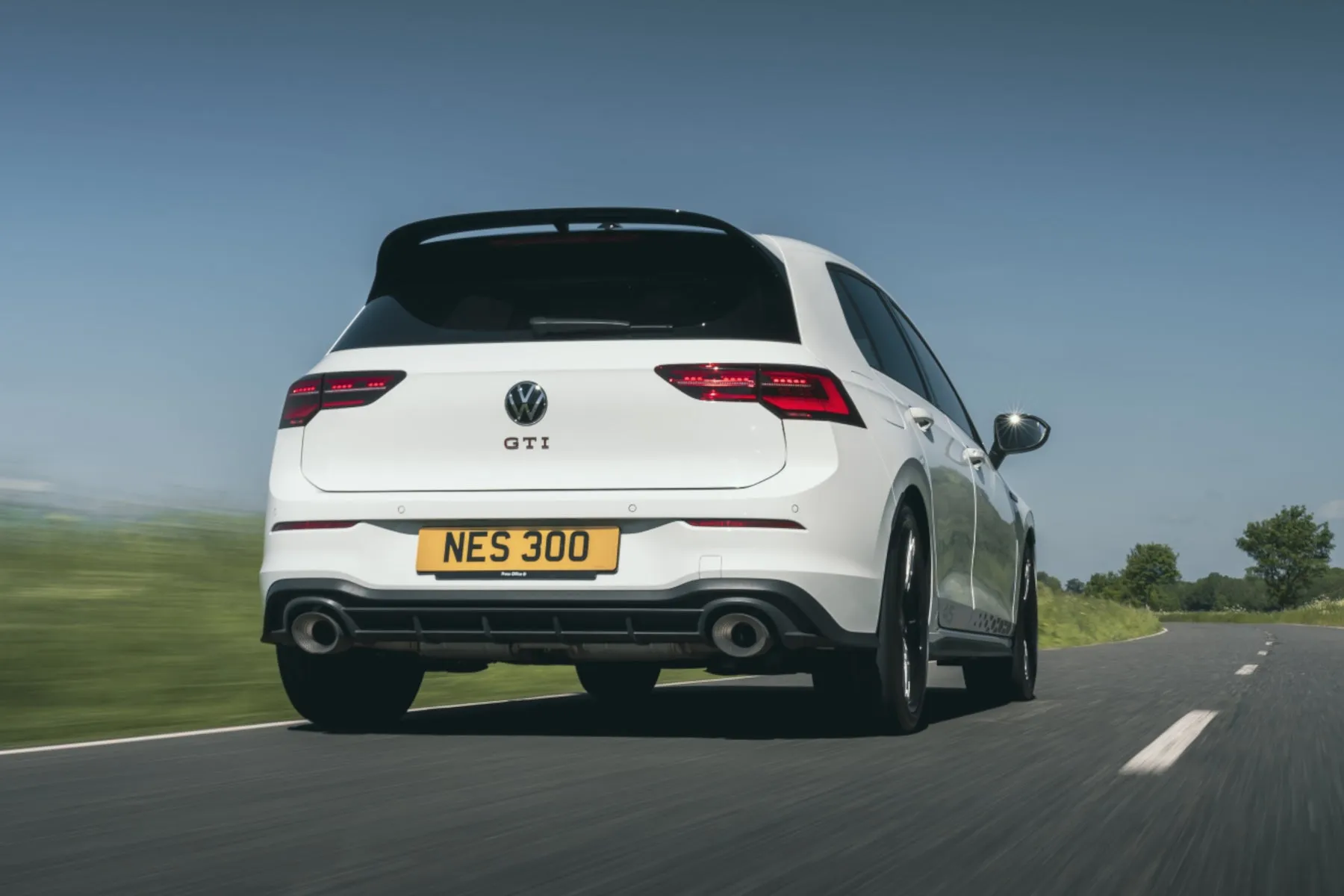
Even the top-rung VW Golf GTI Clubsport doesn't come as standard with Dynamic Chassis Control (DCC), which lets you adjust the softness of the dampers through various modes. If you only tick one option box on your GTI, let it be that.
Yes, fifteen different damper settings in individual mode is too much choice, but stab vaguely near the 'Comfort' end of the dial and you get a very plush ride for a hot hatch. It'll iron out Britain's scabby, pothole-laden roads with far less wincing than pretty much any rival, even if you spec the largest wheel options.
The same applies to the Clubsport model, which can be specified in the smaller wheel options too. We've yet to try a standard GTI without DCC, but we suspect it'll have significantly less adaptability. Other than that, refinement is largely excellent - motorway journeys are effortless.
Firm up the suspension and 'sportify' the engine response, steering and piped-in exhaust noise and it becomes a different animal, with a nice rorty tone as you scythe through the gears along with a tied down feel to the suspension. The steering is nice and precise, although not brimming with feel, and the electronic differential keeps it glued to your chosen line out a bend.
Spec DCC on the Clubsport and you get a special Nurburgring mode, which is supposed to set the car up perfectly for the fearsome German racetrack. Given it's quite a bumpy, challenging circuit, that mode actually fits UK roads really well - although fiddle with the settings on the standard GTI and you can set it up that way yourself.
Push the regular Golf GTI harder, though, and it starts to feel a bit numb and ordinary compared with, say, a Focus ST or Civic Type R. The tweaks of the Clubsport model do give it a bit more of an edge, but it still lacks the ultimate excitement of those cars, refusing to pivot around you with any verve during cornering and not giving you the sense that you're having put much effort in.
Accept that you can feel more engaged and thrilled with the competition, though, and given the GTIs ability to cosset you and make normal journeys easy, it's a respectable compromise.
What engines and gearboxes are available in the Volkswagen Golf GTI?
There's only one engine offered in the Volkswagen Golf GTI: the familiar EA888 2.0-litre four-cylinder turbo that's taken out of the old model with some tweaks. But there are two states of tune.
VW doesn't bother with a 'Performance Pack' any more like it did with the Mk7 GTI, so go for the standard car and you get 245PS and 370Nm of torque. Mated to the six-speed manual gearbox that's enough for 0-62mph in 6.4 seconds and a 155mph top speed, while the acceleration time falls by one tenth if you plump for the seven-speed DSG automatic.
By objective merits it's pretty fast, but because the Golf is so refined it doesn't feel truly rapid, more satisfyingly brisk. This is particularly apparent with the DSG gearbox which slurs changes smoothly, whereas the break in acceleration between changes with the manual adds a little more of a sense of speed.
It's that reason why we recommend stepping up to the GTI Clubsport if you can afford it, with an extra 55PS (up to a nicely round 300PS), along with 30Nm more torque, it'll take the 0-62mph time down to 5.6 seconds. That figure only tells half the story, though. Were it not for the lack of four-wheel drive hampering its getaway, the GTI Clubsport feels pretty much as rapid in-gear as the Golf R, with a decent soundtrack to boot.
On a warm and dry road you really don't miss the lack of rear driven wheels. But it's worth noting that the Clubsport struggles to get its extra power down onto the road in the lower gears when it's cold and wet. If the traffic light grand prix is your favourite activity, get the Golf R.
Refinement and noise levels
You'll struggle to find a quieter, calmer hot hatchback than the Golf GTI. On the base 18-inch wheels road noise is pretty well insulated, while wind noise is low at speed and the engine note is anything but intrusive if you're cruising along. You might even forget you're in the hot Golf altogether.
Upgrading to the 19-inch wheels does introduce a bit of road roar over less-than-perfect surfaces. It's far from a deal breaker, just something to be aware of. Decide for yourself if the visual impact of those wheels is worth it.
Safety equipment: How safe is the Volkswagen Golf GTI?
The Volkswagen Golf GTI comes with the same array of active safety kit as the regular Golf. That means standard adaptive cruise control, Front Assist, automatic emergency braking and lane keep assist. You also get 'Car2X' tech which can wirelessly communicate with infrastructure and other vehicles - that'll get cleverer as time goes on.
What's more, there's automatic headlights on every model, plus a driver fatigue monitor and traffic-sign recognition. You'll need to pay extra for the more advanced 'Proactive passenger protection system', though, while side seat airbags and a curtain airbag are also on the options list.
Regardless, the Golf received a maximum five-star safety rating from Euro NCAP with strong protection for adult and child occupants. The only reason the GTI would be any less safe is because you may be travelling faster if you do have a crash.
MPG and fuel costs: What does the Volkswagen Golf GTI cost to run?
"Hot hatches don't get much more economical than the Golf GTI when you drive smoothly, but use all the performance and it'll drink like the rest of them."
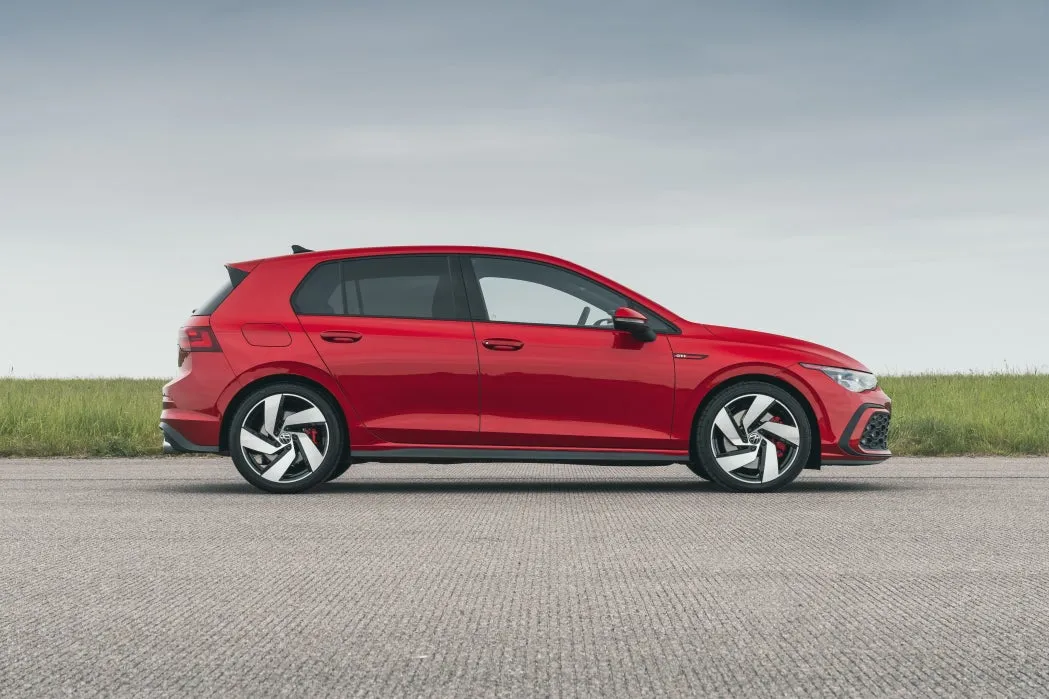
Officially, the VW Golf GTI is at its most efficient with the DSG automatic gearbox, managing a strong 38.7mpg on the combined cycle. That's better than almost all of its rivals, bar the surprisingly frugal BMW 128ti.
The official MPG figure drops by a modest 0.5mpg if you spec the manual gearbox. Impressively, the more powerful GTi Clubsport records exactly the same official economy figure as the standard GTI, but of course it'll drink more if you hoon it about the place.
How reliable is a Volkswagen Golf GTI?
Volkswagen scraped into our top 10 brands in the latest HonestJohn.co.uk Satisfaction Index. Owners find the cars dependable and well-made, with over 88% of owners saying they're satisfied overall.
We've no reason to believe the Golf GTI will be any less reliable than the normal model. The engine is well-proven and has been used by the VW Group for years, while engineers have had a couple of decades to perfect the DSG gearbox, too. Only the infotainment is a cause for concern, with some niggly gremlins that are reduced by regular software updates.
Insurance groups and costs
Being the hot Golf, it's no surprise that the GTI is more expensive to insure than the standard car. However it actually sits in slightly lower insurance groups than most of its key rivals.
The cheapest GTI to insure is the standard one, unsurprisingly, which sits in group 28. The Clubsport is in group 29, while the pricier, limited-run Clubsport Edition 45 sits in group 31.
VED car tax: What is the annual road tax on a Volkswagen Golf GTI?
All VW Golf GTIs cost the same to tax whichever version you go for. Under 2022's road tax rates, it'll be £585 for the first year tax rate, falling to £165 for each year after that.
However, it's a pity that the GTI Clubsport's list price is just £5 over the £40,000 threshold for the 'premium car' tax levy. That means you'll have to pay an additional rate of £355 per year on top of the standard rate for five years.
How much should you be paying for a Volkswagen Golf GTI?
"The latest VW Golf GTI has been on sale for a couple of years and is popular, so there is a decent choice of used models. Don't expect huge savings in the current climate, though."
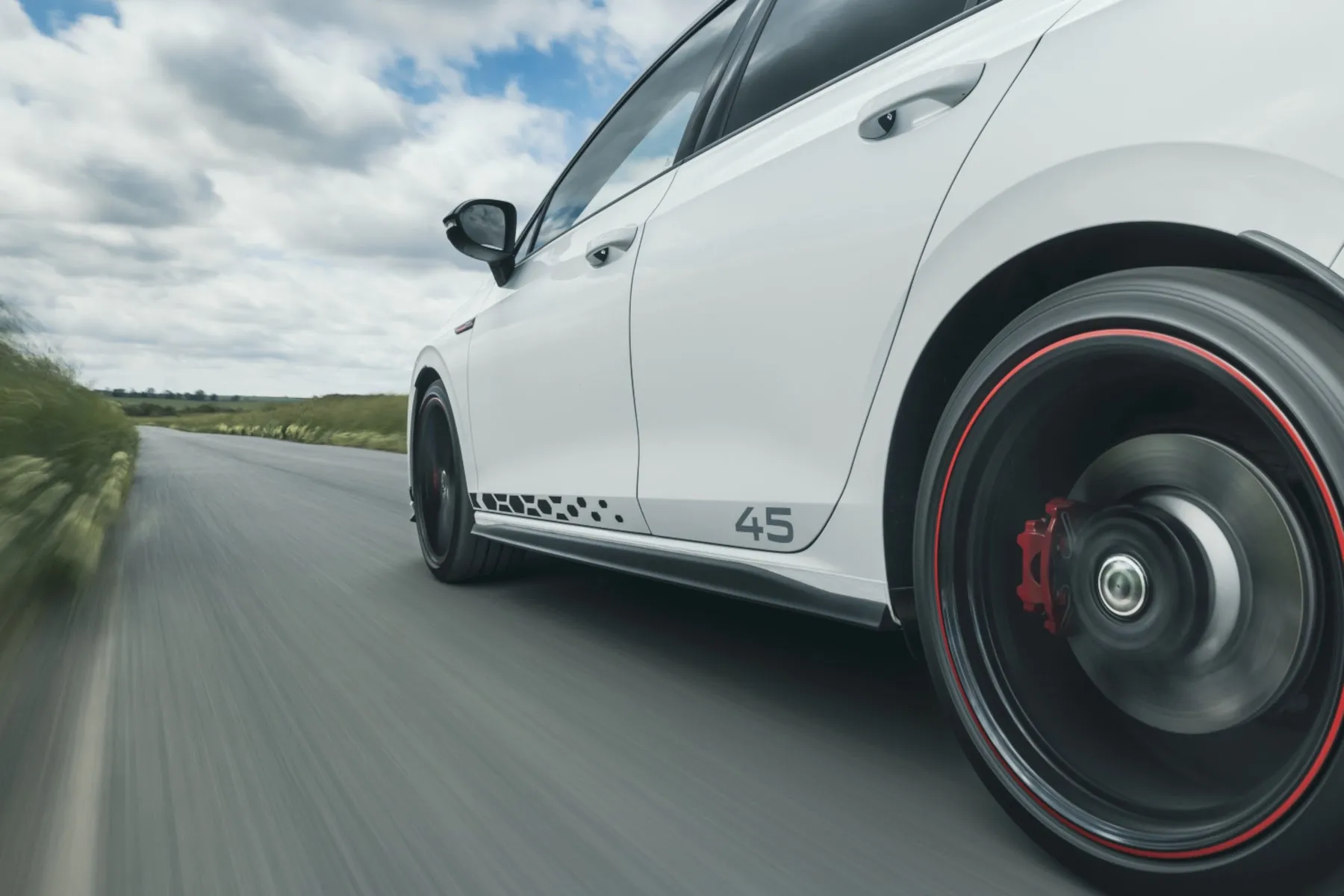
The latest Volkswagen Golf GTI went on sale in the first half of 2020, meaning you'll see some used examples emerging onto the market. These offer savings over new models (which you can check out on our search page), although because of the current new car supply shortage they've held their value pretty well.
Expect to pay a minimum of £32,000 for a standard 2020 GTI with around 17,000 miles on the clock, rising to at least £35,000 for a year-old model with less than 10k on the clock. Interestingly the Clubsport model isn't commanding much more, starting from under £36,000 for a 2021 model with less than 10,000 miles on the clock.
From new, the GTI starts from just over £36,000, while the Clubsport commands just over £40,000. That's a couple of thousand more than a Hyundai i30 N, Honda Civic Type R and Ford Focus ST, but the GTI has always been a slightly more high-end choice.
Trim levels and standard equipment
The VW Golf GTI comes pretty well equipped as standard, with the full roster of infotainment tech, integrated sports seats, 18in alloys, privacy glass, a drive mode selector, ambient lighting and LED matrix headlights with dynamic turn signals. You also get a heated steering wheel, auto lights and wipers and a suit of safety aids.
The GTI Clubsport offers basically the same level of standard kit. However, heated front seats are optional, as is the all-important Dynamic Chassis Control and leather upholstery. We're also disappointed to see a rear-view camera on the options list - really it should be standard at this price point.
Ask the heycar experts: common questions
Is the Volkswagen Golf GTI or Golf R better?
What does GTI stand for?
Is the VW Golf GTI good car?
Get our latest advice, news and offers
Keep me updated by email with the latest advice, news and offers from heycar.
By submitting you agree to our privacy policy
